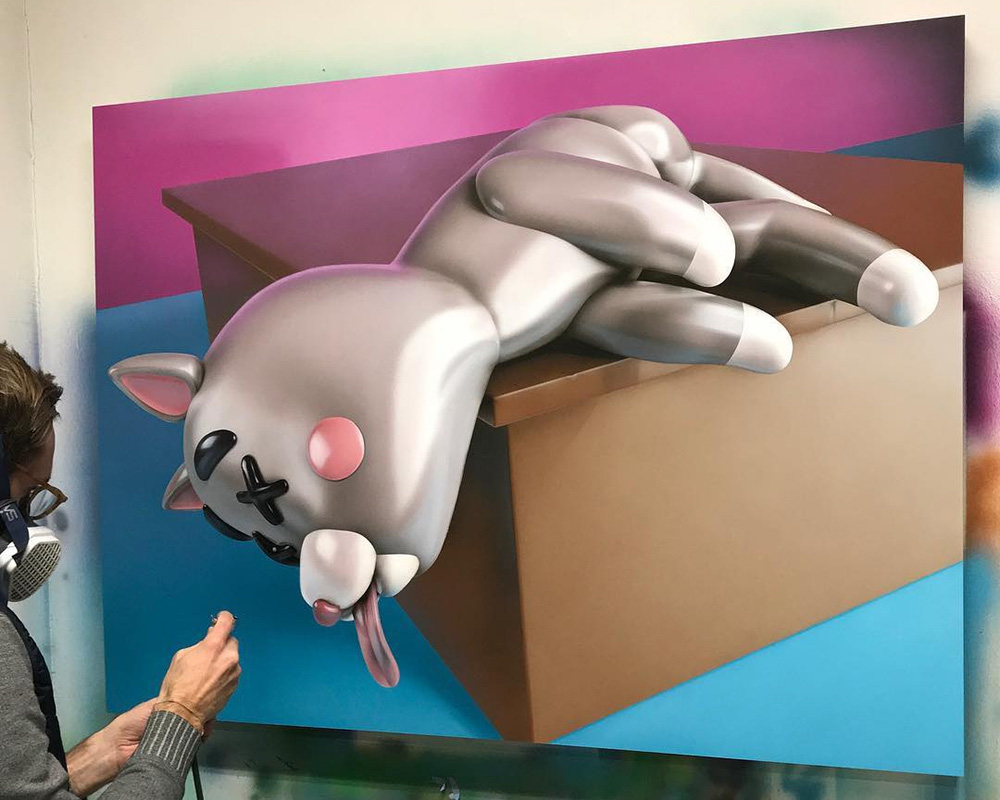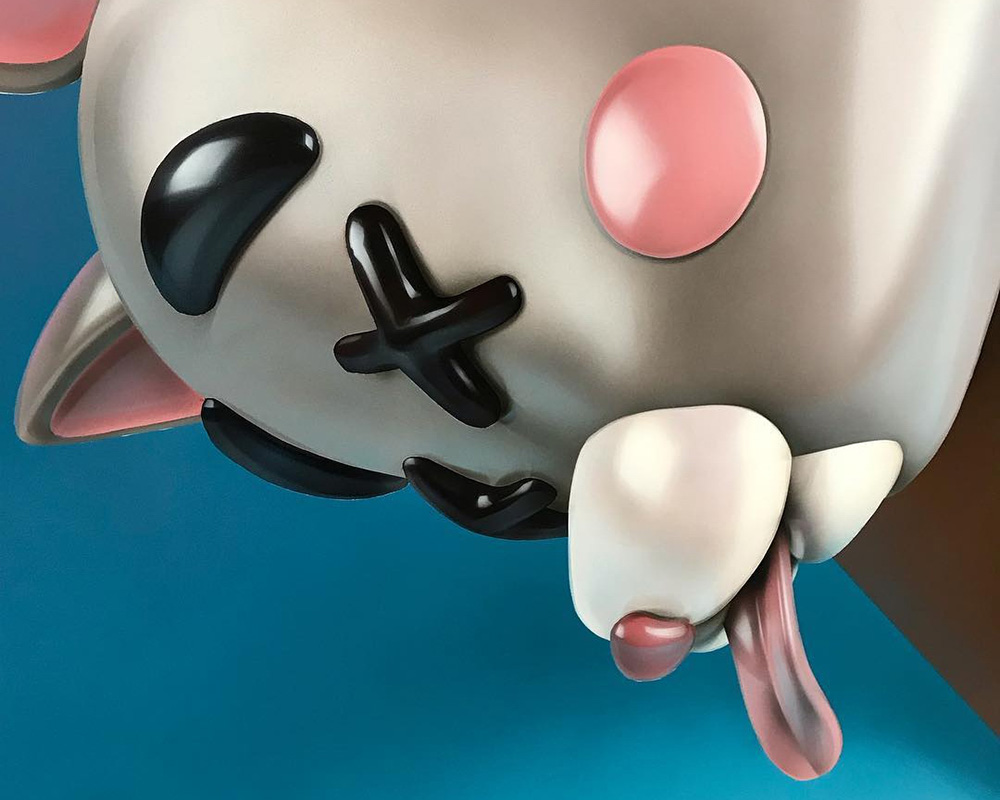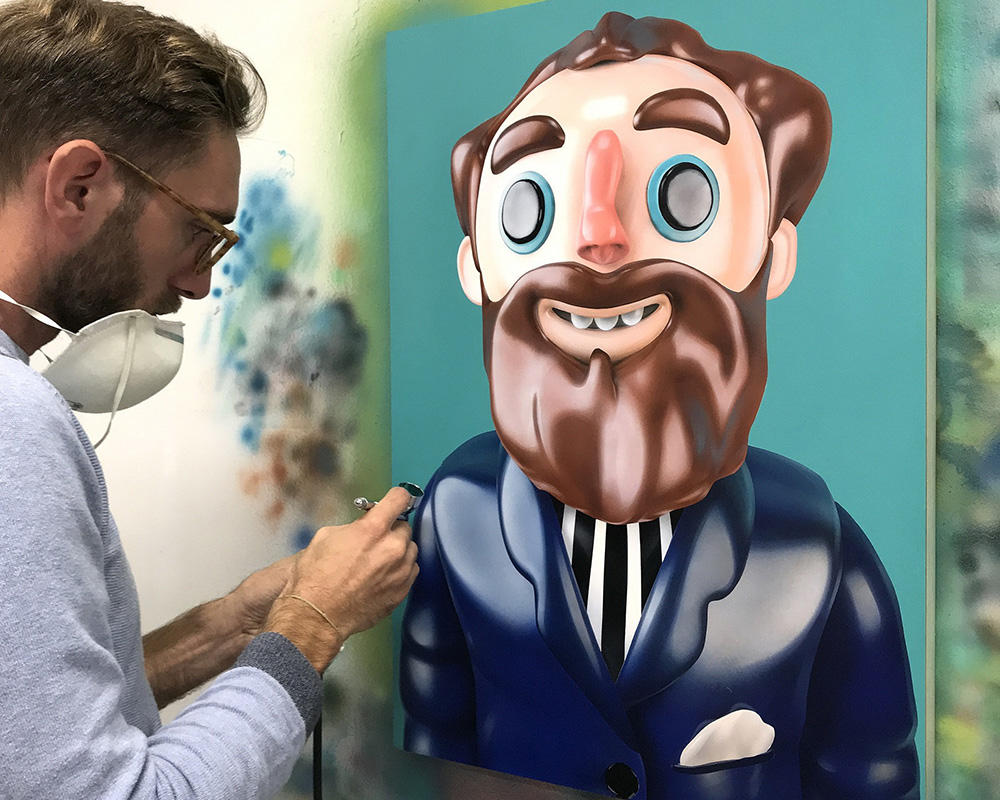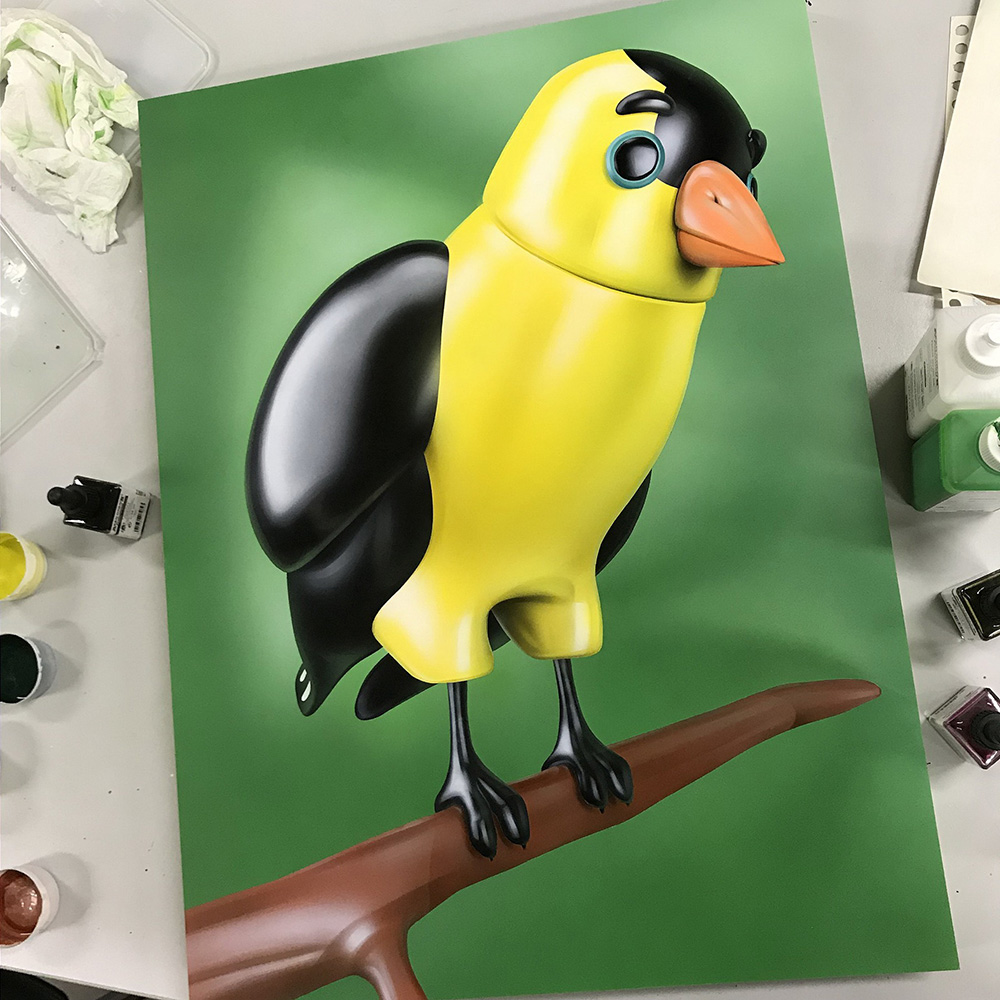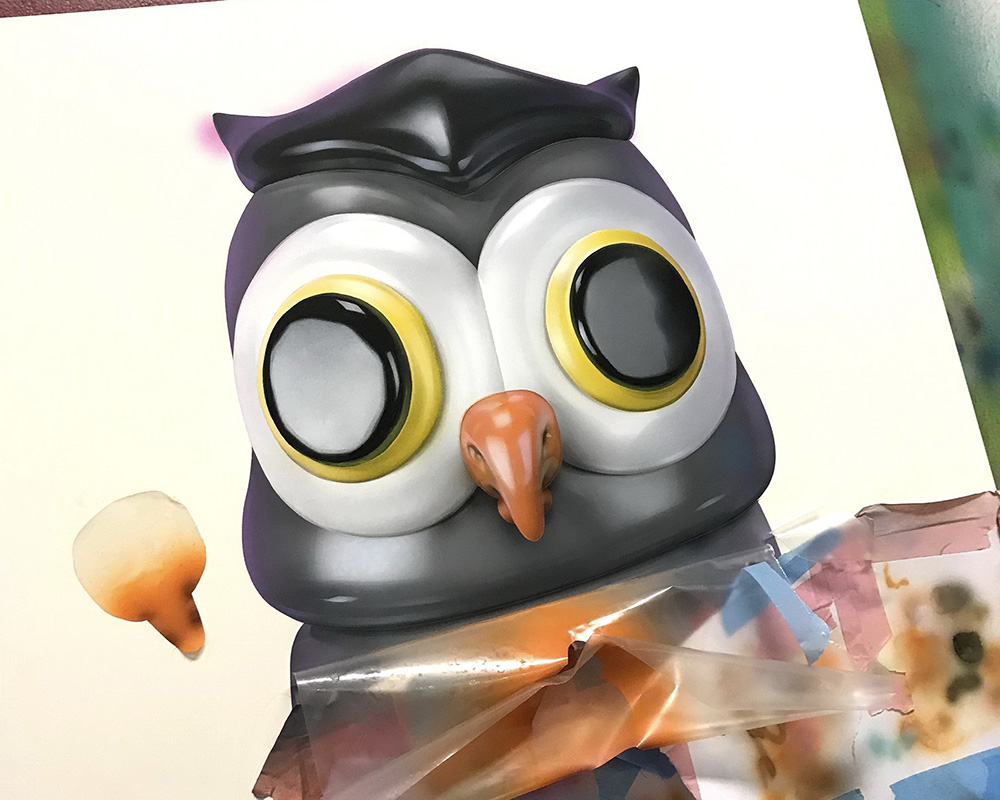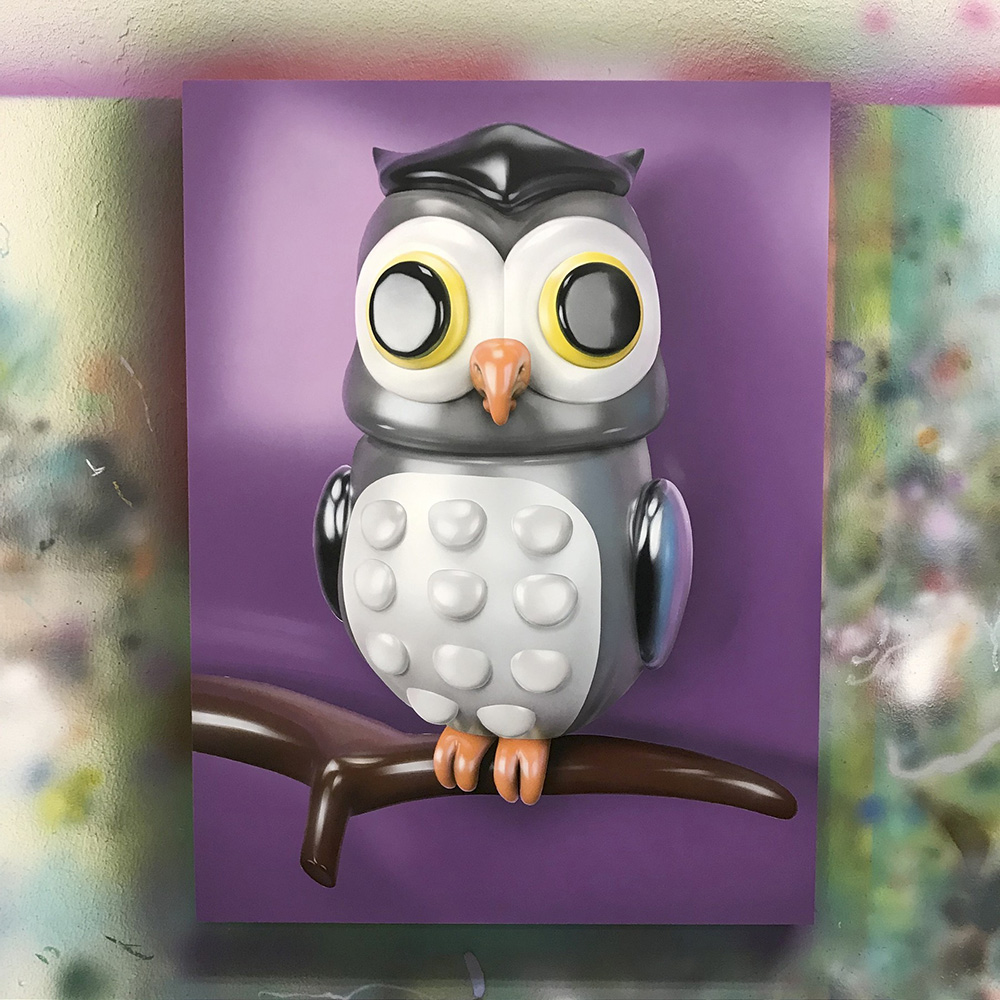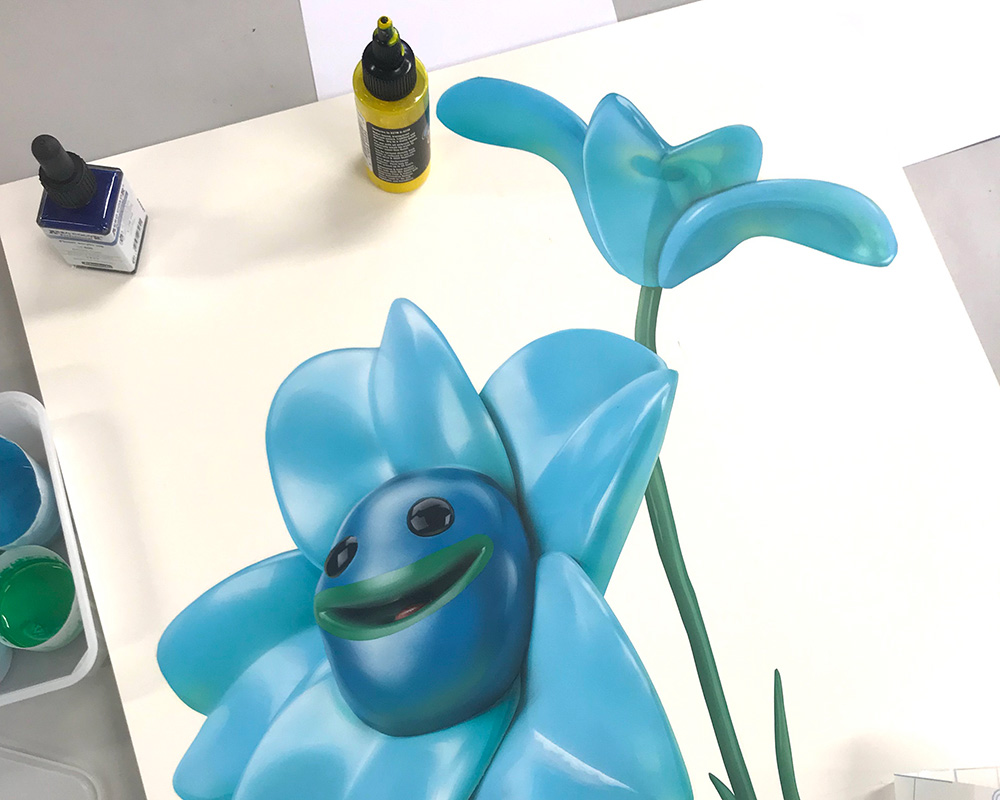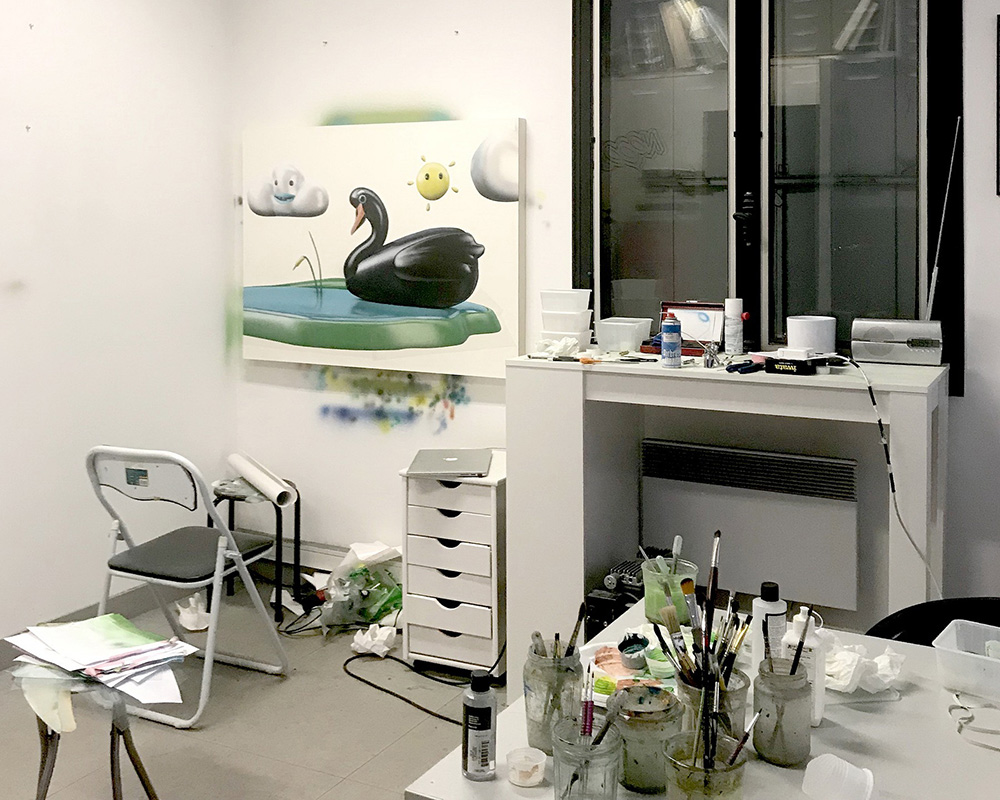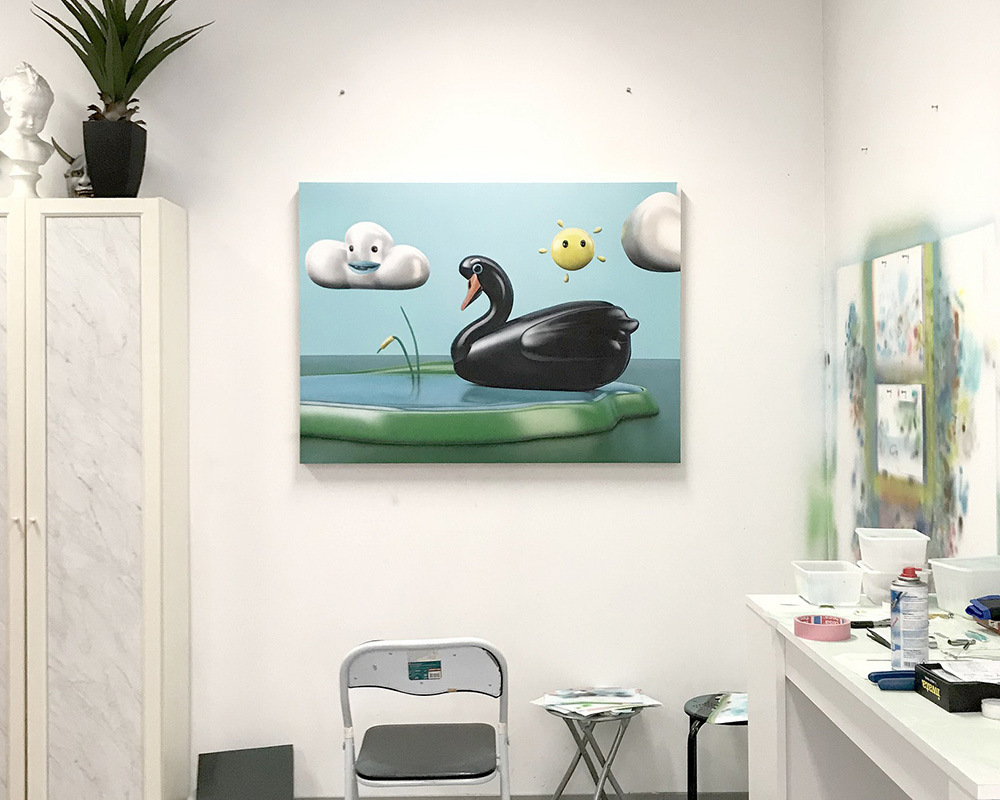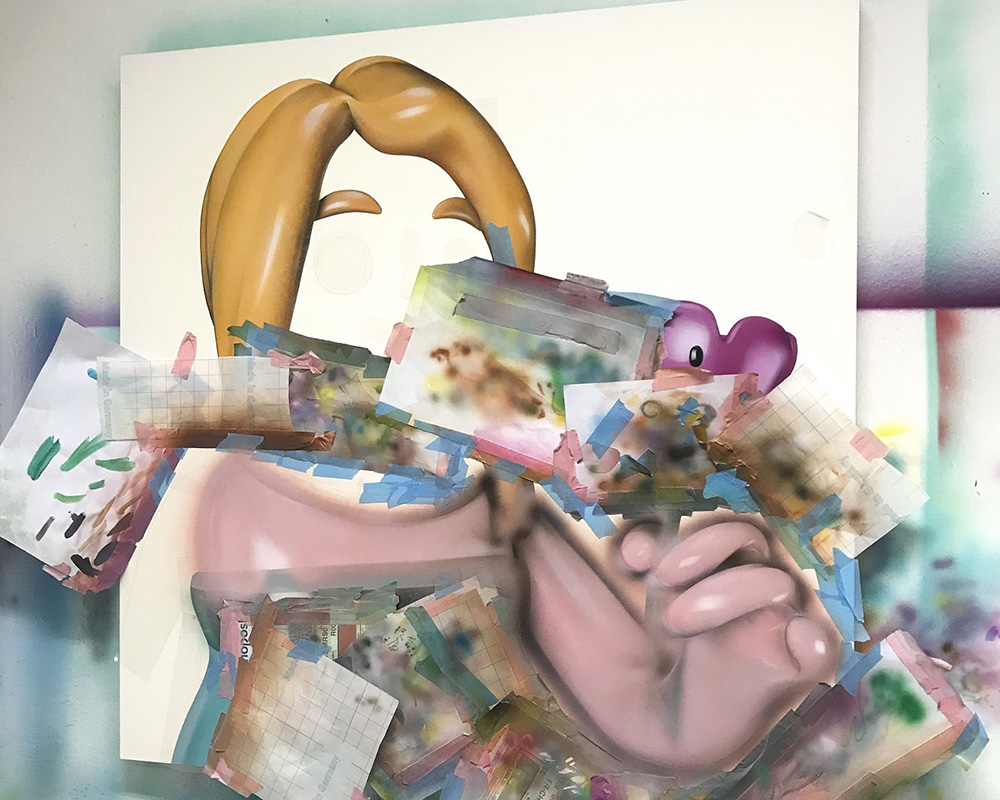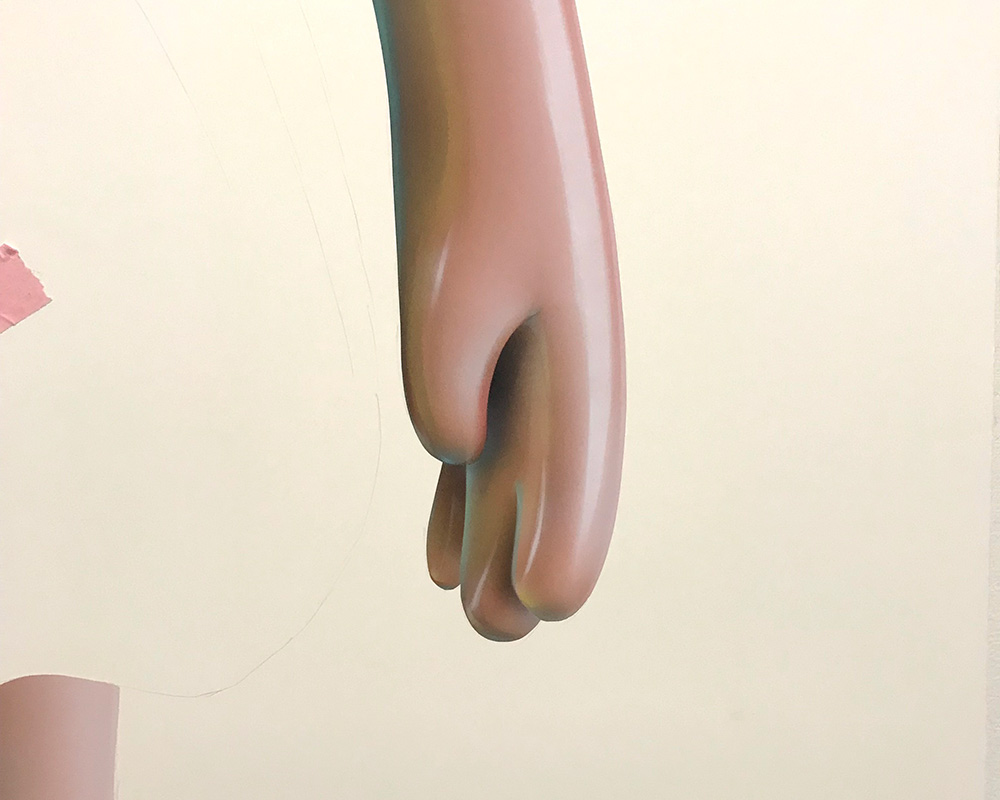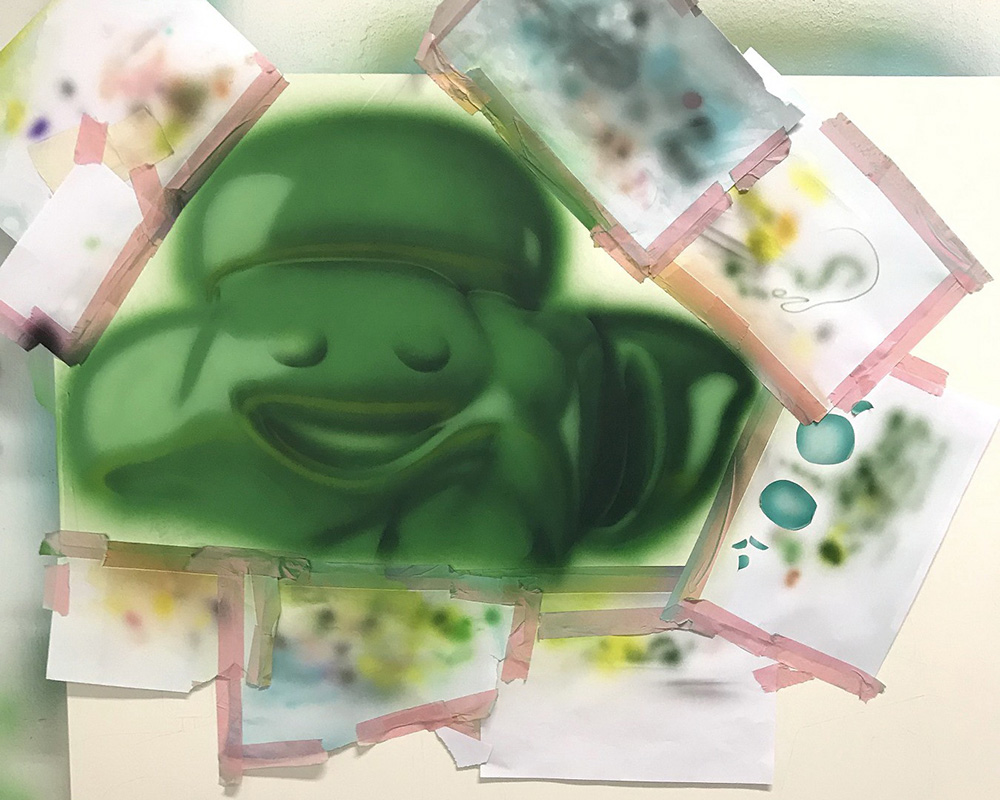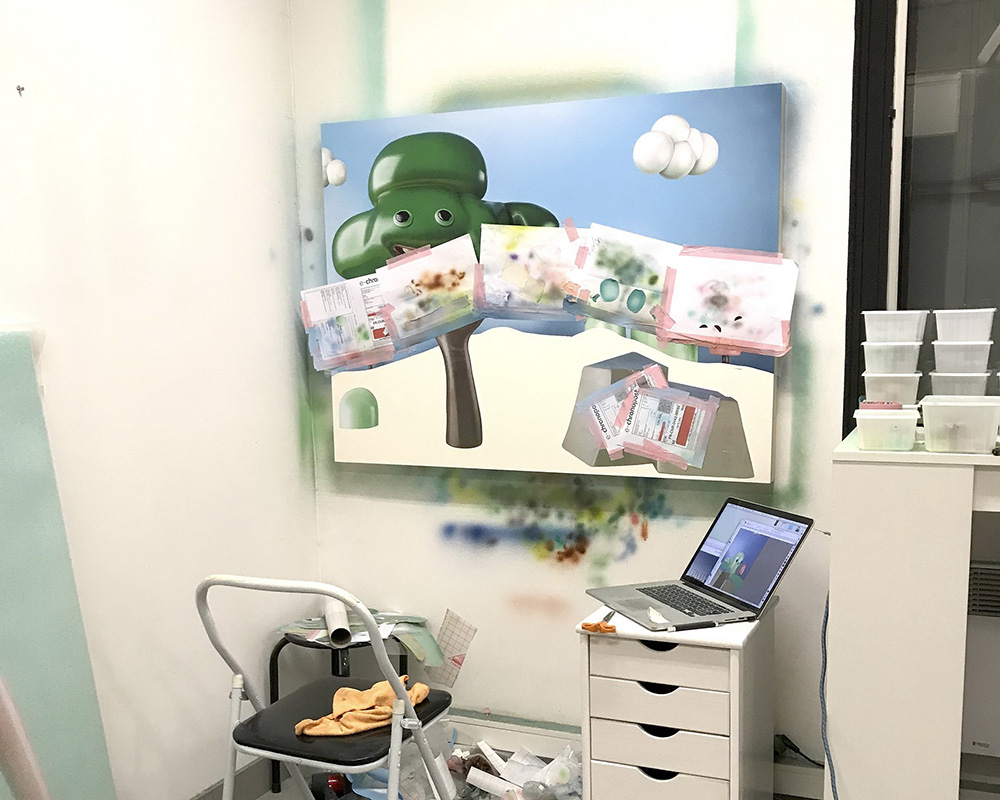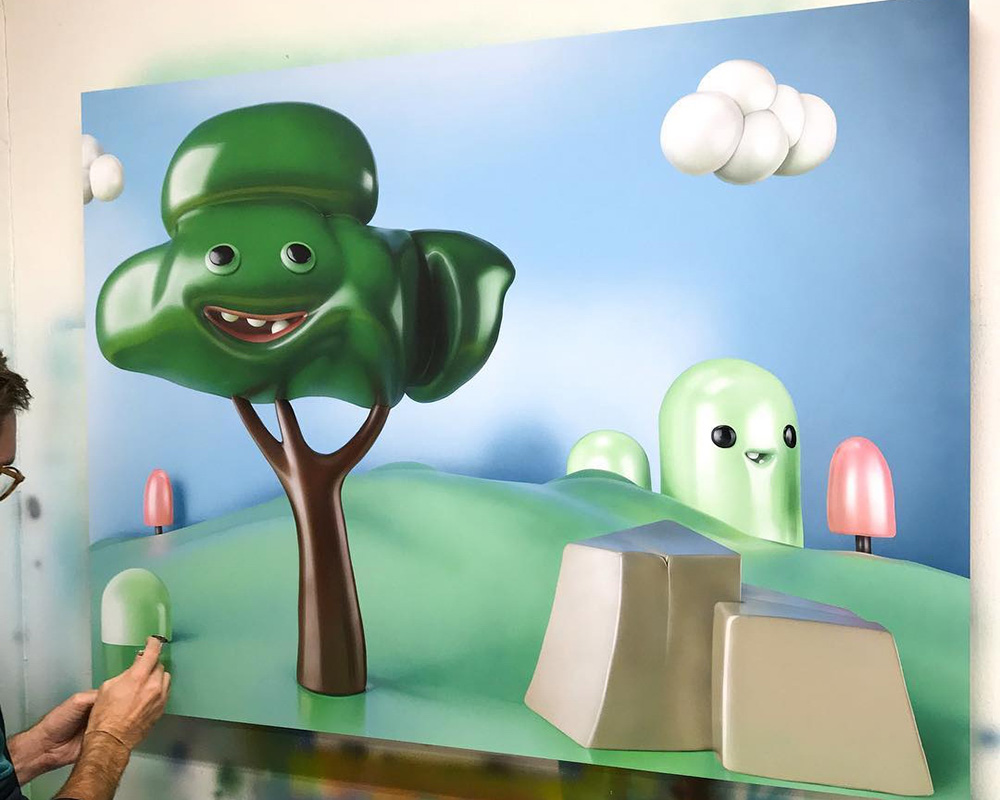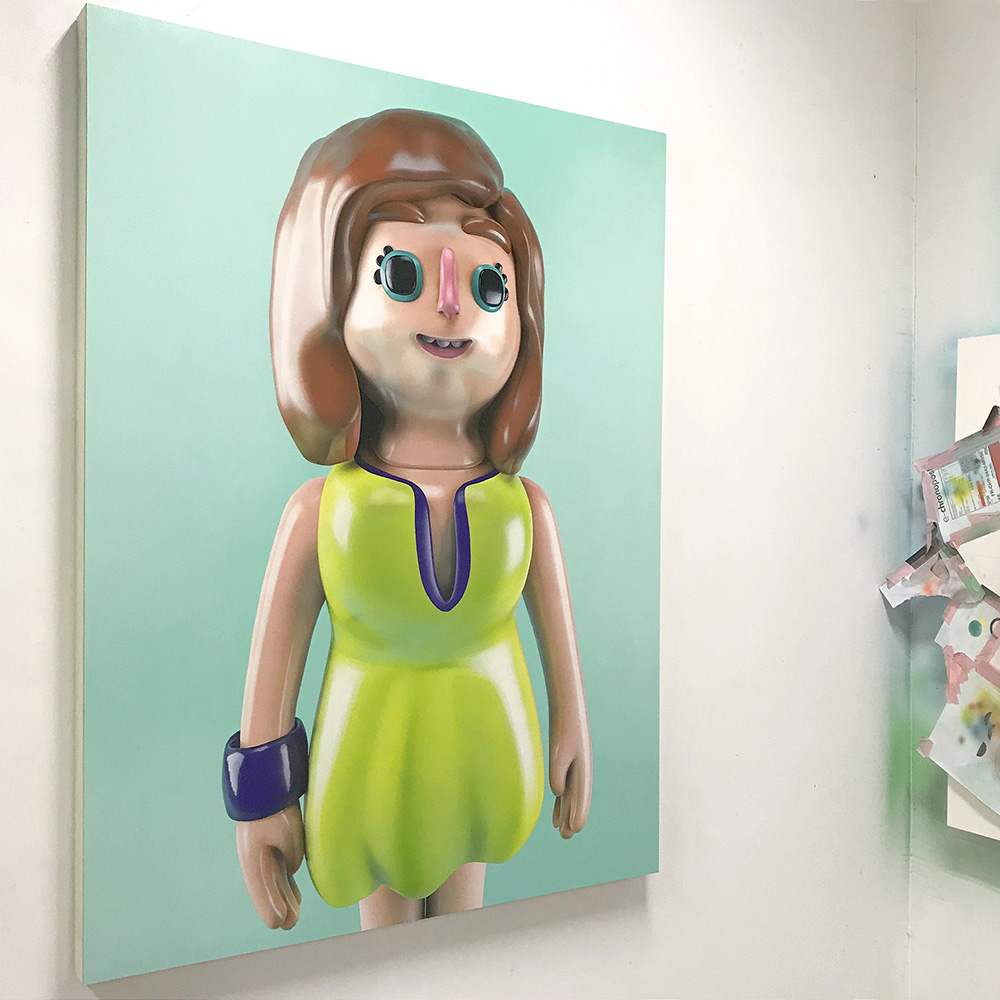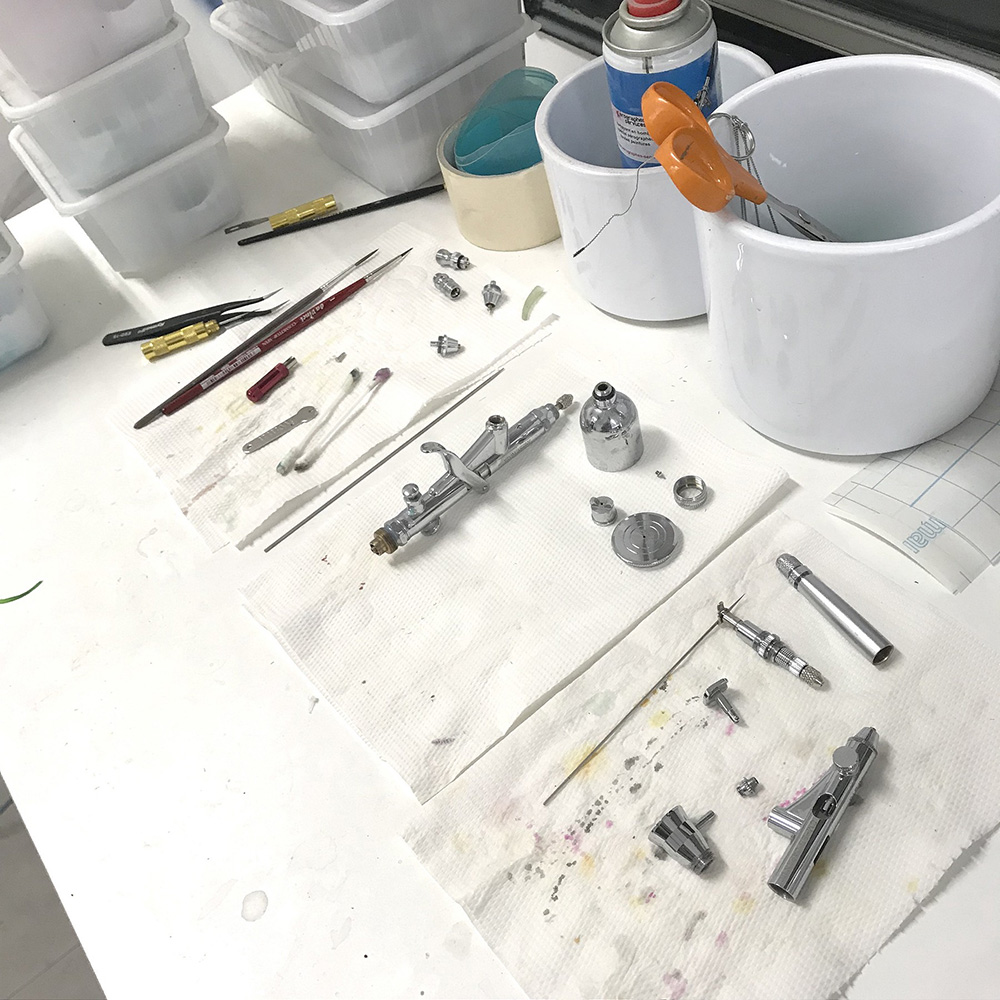Recently, we've witnessed a plethora of painters incorporating computer graphics, screen aesthetics, 3D modeling, and plastic rendering into their traditional medium. Cesar Piette has been pushing this genre into new territory with his hyperplastic airbrush paintings.
Using traditional painting methods, from monochromatic coats and color layering to essential characteristics such as perspective, light, and composition, his works on panel reinvent figurative painting. Using airbrush as his tool of choice, the French artist creates hyperplastic realist images that sit in the liminal space of painting, toy design, photography and 3D rendering. He maintains handmade qualities through tiny imperfections, but these works reference classical painting and directly challenge the present and future of the medium.
We were very intrigued by Piette's Pixar-esque creations, so we got in touch with him and took a virtual peek into his studio, background, process, and his unique positioning between classical painting and custom car painting.

Sasha Bogojev: How did you develop this hyperplastic visual style?
Cesar Piette: My background is in illustration, videogames, and comics. I have a Master of Applied Arts degree and earned a BFA years later. I quit comics and video games and started painting with the intention of making a living from it when I was around 29. For a long time, I tried to ignore my background and I tried to act like a ‘real’ painter, but without success. Once I began to accept my past, I became more confident with myself. Then my stuff began a slow slide into the digital. But something was still wrong and at that point I felt pretty discouraged. I wanted to stop creating entirely so I decided to go extreme and do the worst painting that I could. A painter’s nightmare: everything became illusionistic, cartoon, color-saturated, computer generated, shiny, erasing every brushstroke. Technical issues pushed the aesthetic too.
And this is the result? How much do you think digital imagery influences your work?
Like everybody, I’m confronted with tons of images each day, but digital imagery doesn't directly influence my work. My concern has always been with painting itself and which tools can I use to make it. I don’t make collage or appropriation, my pictures are built completely from start to end. I don’t have multiple options of how to blend references and use one or another. I tend to focus on shapes, composition, light, gradients... When you start a 3d scene you have a simple cube in a black background and you start to transform it. I am quite protected from all this imagery in my practice. I like to think about it as a construction game, like a divine power of creation.

Do you have an idea where that plastic aesthetic comes from?
In a formal way, I think my stuff has to see with human representation. Like any painter, I was wondering how I could bring something different to hundreds of years of history? From Caravaggio to Courbet or Manet, De Kooning, or Freud, painters have been compelled to represent the human, flesh, and the organic in many different ways. I thought "what if I turn everything that is ‘representable’ into an inorganic/plastic toy?" Skin, animals, hairs, everything. Nowadays, we don't tend to experience much from our organic bodies. Medicine has to cure the patient but especially reduce the pain. We try to fight against our age, push the limits in sport, and we transform them. There is a disconnection between what we are made of and what we want from our bodies. Also, I am quite okay with letting the viewer have their own interpretation, so it's possible to do it in multiple ways. And I would say my work embodies this contemporary trend: the ‘sleek’ which sets a new relationship to our environment and is powered by the digital age. Although, my surfaces, both of the objects I paint, and the canvas’ surface, might question this.
How do you create your imagery? What is your creative process like?
Usually I do a couple of sketches and then grab my computer to start modeling. It can differ greatly from the pencil sketch as I'm not really good with the computer, but I like this intuitive step. With the computer, you can adjust as you want, find new options. And then I start the physical painting. I try to explore this relationship between the digital and the analog, and I am always frustrated when I look at my references and my painting because you can find scalpels hits, painting drips, color shifts, shapes are not perfect as they would have to be, and whatever you could say about I'm not that good at airbrushing either so you can see it when you look at the works. I think my paintings embody this fine line between illusion and failure to create it just as the computer does. On first sight it appears good, in the end, you experience it like weird or fake. My paintings always have these both specifications.

How dependent do you think you are on digital technology in general?
You don’t have to be an artist to be influenced by digital technology today. It has affected almost every aspect of our lives and changed our relationship to images. A picture or event can turn viral in a few hours. On a personal level, I live in a really small town in the south of France and the probability to paint the way I paint was really low. With the internet, I had access to essential information that helped to develop my work. I could simply not pretend to a career without it.
Have you used traditional techniques before airbrush?
Sure, I had a very classic extensive training at my first school. In applied arts school, it's almost only based on it during the first years. But my process of painting is very close to classical painting. I began to set up monochromatic values most of the time and finish by some colored lavishes to revive tones.
What do you find attractive about using the airbrush instead?
Attractive is not really the word I would use. I just wanted to choose the best tools to convey the meaning I want to. It also references other fields than just painting, such as illustration or custom car paint. In a way, it erases brushstrokes, makes everything slicker and colder.

What or who would you say are your biggest influences?
As I mentioned before I come from a different background than only fine art field, and I must say that during a long period Mario Bros did have much more influence than Edouard Manet on me. But let’s say the history of art, video games, toys. I really often look at Léger, Ingres, or Guston. I find them digital qualities. I am also interested in early antique art as research for purity. My shapes are really schematics and want to keep them simple.
What do you have planned for the future and coming months?
I want to continue my exploration of the basics of figurative painting: portraits, landscapes, animals, nudes, still lives. This is like establishing my own visual grammar. It contains almost endless possibilities. In the coming months, I'll have one piece in a group show at The Garage in Amsterdam, and another in a group show in the US.
Photos and Interview by Sasha Bogojev

